
Ring for Jeeves is a novel by P. G. Wodehouse, first published in the United Kingdom on 22 April 1953 by Herbert Jenkins, London and in the United States on 15 April 1954 by Simon & Schuster, New York, under the title The Return of Jeeves.
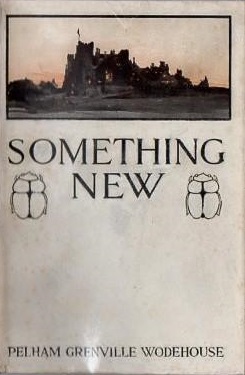
Something Fresh is a novel by P. G. Wodehouse, first published as "Something New" in the United States, by D. Appleton & Company on 3 September 1915. It was published in the United Kingdom as "Something Fresh" by Methuen & Co. on 16 September 1915. There are a number of differences between the American and British versions, but essentially, it is the same book. The novel introduces Lord Emsworth of Blandings Castle, whose home and family reappear in many of Wodehouse's later short stories and novels.

Plum Pie is a collection of nine short stories by P. G. Wodehouse, first published in the United Kingdom on 22 September 1966 by Barrie & Jenkins, and in the United States on 1 December 1967 by Simon & Schuster, Inc., New York. The collection's title is derived from P. G. Wodehouse's nickname, Plum.

A Few Quick Ones is a collection of ten short stories by P. G. Wodehouse. It was first published in the United States on 13 April 1959 by Simon & Schuster, New York, and in the United Kingdom on 26 June 1959 by Herbert Jenkins, London. The first US edition dust jacket was designed by Paul Bacon. The book's title comes from the informal phrase "a quick one", which is British slang for an alcoholic drink consumed quickly.

Eggs, Beans and Crumpets is a collection of short stories by P. G. Wodehouse, first published in the United Kingdom on April 26, 1940 by Herbert Jenkins, London, then with a slightly different content in the United States on May 10, 1940 by Doubleday, Doran, New York.

Piccadilly Jim is a novel by P. G. Wodehouse, first published in the United States on 24 February 1917 by Dodd, Mead and Company, New York, and in the United Kingdom in May 1918 by Herbert Jenkins, London. The story had previously appeared in the US in the Saturday Evening Post between 16 September and 11 November 1916.

The Man Upstairs is a collection of short stories by P. G. Wodehouse, first published in the United Kingdom on 23 January 1914 by Methuen & Co., London. Most of the stories had previously appeared in magazines, generally Strand Magazine in the UK and Cosmopolitan or Collier's Weekly in the United States. Although the book was not published in the US, many of the stories were eventually made available to US readers in The Uncollected Wodehouse (1976) and The Swoop! and Other Stories (1979).

The Coming of Bill is a novel by P. G. Wodehouse. It was published as Their Mutual Child in the United States on 5 August 1919 by Boni & Liveright, New York, and as The Coming of Bill in the United Kingdom on 1 July 1920 by Herbert Jenkins Ltd, London. The story first appeared in Munsey's Magazine (US) in May 1914 under the title The White Hope.

The Small Bachelor is a novel by P. G. Wodehouse, first published in the United Kingdom on 28 April 1927 by Methuen & Co., London, and in the United States on 17 June 1927 by George H. Doran, New York.

Mulliner Nights is a collection of short stories by P. G. Wodehouse. First published in the United Kingdom on 17 January 1933 by Herbert Jenkins, and in the United States on 15 February 1933 by Doubleday, Doran. The stories in the collection were originally published in magazines in the UK and the US between 1930 and 1932.

Doctor Sally is a short novel by P. G. Wodehouse, first published in the United Kingdom on 7 April 1932 by Methuen & Co., London. In the United States, it was serialised in Collier's Weekly from 4 July to 1 August 1931 under the title The Medicine Girl, and was included under that name in the US collection The Crime Wave at Blandings (1937).
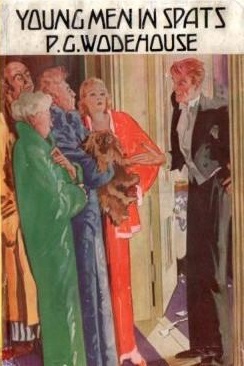
Young Men in Spats is a collection of short stories by P. G. Wodehouse, first published in the United Kingdom on 3 April 1936 by Herbert Jenkins, London, then in the United States with a slightly different selection of stories on 24 July 1936 by Doubleday, Doran, New York.

Money in the Bank is a novel by P. G. Wodehouse, first published in the United States on 9 January 1942 by Doubleday, Doran, New York, and in the United Kingdom on 27 May 1946 by Herbert Jenkins, London. UK publication was delayed while Wodehouse was under suspicion of collaboration during the Second World War. The book was published in English in Germany in August 1949 by Tauchnitz.

The Old Reliable is a novel by P. G. Wodehouse, first published in the United Kingdom on 18 April 1951 by Herbert Jenkins, London and in the United States on 11 October 1951 by Doubleday & Co, New York. The novel was serialised in Collier's magazine from 24 June to 22 July 1950, under the title Phipps to the Rescue.
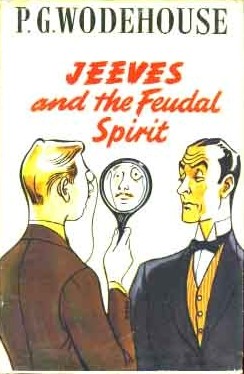
Jeeves and the Feudal Spirit is a comic novel by P. G. Wodehouse, first published in the United Kingdom on 15 October 1954 by Herbert Jenkins, London and in the United States on 23 February 1955 by Simon & Schuster, Inc., New York, under the title Bertie Wooster Sees It Through. It is the seventh novel featuring Bertie Wooster and his valet Jeeves.
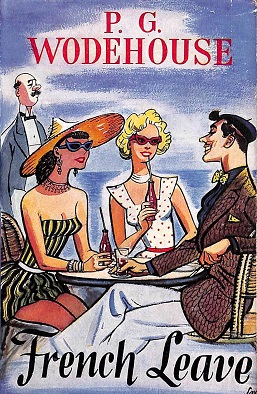
French Leave is a novel by P. G. Wodehouse, first published in the United Kingdom on 20 January 1956 by Herbert Jenkins, London and in the United States on 28 September 1959 by Simon & Schuster, Inc., New York.

Something Fishy is a novel by P. G. Wodehouse, first published in the United Kingdom on 18 January 1957 by Herbert Jenkins, London and in the United States on 28 January 1957 by Simon & Schuster, Inc., New York, under the title The Butler Did It.

Company For Henry is a novel by P. G. Wodehouse, first published in the United States on 12 May 1967 by Simon & Schuster, Inc., New York, under the title The Purloined Paperweight, and in the United Kingdom on 26 October 1967 by Barrie & Jenkins, London.
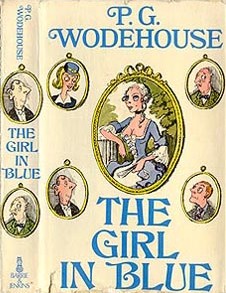
The Girl in Blue is a novel by P. G. Wodehouse. It was first published in the United Kingdom on 29 October 1970 by Barrie & Jenkins, London, and in the United States on 22 February 1971 by Simon & Schuster, Inc., New York.

Reginald "Reggie" Pepper is a fictional character who appears in seven short stories by English author P. G. Wodehouse. Reggie is a young man-about-town who gets drawn into trouble trying to help his pals. He is considered to be an early prototype for Bertie Wooster, who, along with his valet Jeeves, is one of Wodehouse's most famous creations.




















